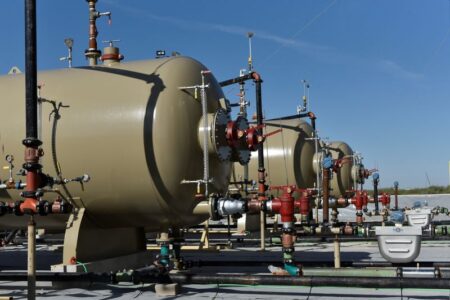Investing.com — stocks fell by just over six million barrels last week, more than double the level forecast. But output of oil in the largest producing country hit new three-year highs, a government report showed on Wednesday, as supply-demand of the commodity remained volatile from persistent Saudi attempts to squeeze a market at a crossroads due to the sluggish economy in top importing nation China.
U.S. gasoline inventories registered a surprise build last week against expectations for a drop, while the growth in distillates was four times more than forecast, the Energy Information Administration, or EIA, said in its Weekly Petroleum Status Report.
fell by 6.135M barrels during the week ended Aug. 18, following through with the 5.960M decline in the prior week to Aug. 11, the EIA said. Industry analysts tracked by Investing.com had forecast a drop of just 2.850M for last week.
But on the front, the EIA reported a build of 1.467M barrels, after a slide of 0.261M barrels last week. Analysts had forecast a decline of 0.888M for last week. Automotive fuel gasoline is the No. 1 U.S. fuel product.
With , there was a climb of 0.945M barrels versus the prior week’s gain of 0.296M. Analysts had predicted a build of just 0.218M for last week. Distillates are refined into , diesel for trucks, buses, trains and ships, and fuel for jets.
The EIA’s reports on oil and fuel inventories have turned volatile lately as global stockpiles see shifts from Saudi and Russian maneuvers to slash exports amid slower buying from China.
Inventory levels aside, the EIA report was noteworthy for the new three-year high estimates that it made for U.S. oil production.
Crude output was projected at 12.8M barrels per day during the week to Aug. 18, making it the agency’s highest such estimate since the record 13.1M barrels produced daily before the coronavirus outbreak in March 2020.
Over the past three weeks, the EIA has constantly raised production estimates for oil by 100,000 barrels each week under a new reporting methodology that accounts for oil potentially flowing from oil wells that are other than those drilled and uncompleted — referred to in the industry as DUCs.
“Earlier this year the EIA revised the number of drilled but uncompleted wells in the top U.S. shale basin, adding several years’ worth of unreported DUCs,” said Phil Flynn, energy analyst at Chicago brokerage Price Futures Group.
Flynn said the revisions imply that drilling-rig productivity has been higher than past estimates despite the having fallen by more than 15% this year.
The EIA “believes active drilling rigs were about 10% more productive in 2021–2022 than previously estimated”, Flynn added.
Read the full article here












